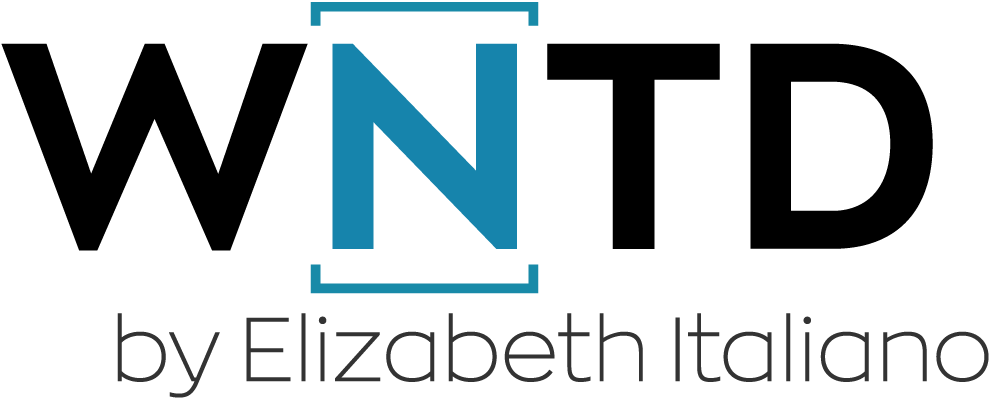When we hear the word “discovery,” it’s usually in the context of sales. But here’s the thing: Discovery is just as crucial for Customer Success—especially when working with existing customers. It’s a skill that often gets overlooked, and that’s a problem.
Why Discovery is Critical for Customer Success
When a client becomes a churn risk, the first thing you should do is conduct churn risk discovery to understand what’s really going on. But too often, this step gets skipped.
Think about it: When a client hints at canceling or hesitates to renew, what happens? Panic mode! Suddenly, it’s all hands on deck, throwing everything at the client in a desperate attempt to keep them.
But here’s the kicker: That frantic, fire-fighting approach often fails because we haven’t slowed down to understand the root cause of the churn risk. Without proper discovery, we’re just guessing what’s wrong—and that’s a waste of time, energy, and resources.
The Solution: Conducting a Churn Risk Discovery Call
To avoid wasted efforts, we need to start with a churn risk discovery call. This isn’t just about saving the renewal—it’s about rebuilding trust and fostering a collaborative relationship with the client.
So, how do we conduct effective discovery? That’s where the PART framework comes in. PART stands for Problem, Action, Result, and Trigger, and it guides us in assessing the situation.
Using the PART Framework for Churn Risk Discovery
Let’s break it down:
Problem
- Product and Service Issues: What challenges has the client faced with your solution?
- Business Problems: What were they hoping your product would solve, and where did it fall short?
Action
- What actions have been taken so far to address these challenges?
- What further actions are needed to achieve their goals?
- Has the client already started evaluating cancellation options?
Result
- What results did they expect but didn’t achieve?
- What outcomes do they need moving forward to feel successful?
Trigger
- What’s the real reason they’re considering canceling?
- Is there a budget reallocation, a competitor’s offer, or a key business priority driving the decision?
These are the kinds of details we need to uncover to identify what’s really going on. Think of it like peeling back the layers of an onion—there’s more than meets the eye. This is where layered discovery questions come into play.
Layer 1: The Surface-Level Fit
The outermost layer is the basic information you can gather even before your first discovery call—essentially, it’s the FIT. This includes details like:
- Industry
- Company size
- Use case
- Client needs
You might assume, “If they’re a client, of course, they’re a fit,” but not so fast. There are many examples where sales teams sold to clients who were ultimately a poor fit for the product, making it difficult for them to achieve success. Even worse, some clients who initially aligned with product-market fit may eventually drift out of it, creating a misalignment.
Why Confirming Fit Matters
It’s essential to consistently reassess whether a client is still a good fit for your product, even after the sale. Without this step, you risk retention issues, misaligned expectations, and wasted resources.
Example Fit Check:
Imagine you are a Customer Success Manager (CSM) for a call recording and revenue intelligence platform. One of your Ideal Customer Profiles (ICPs) are large enterprise software companies with large sales teams. A client meeting this profile might look like this:
“The client is a $1B MarTech company with a large sales team that needs a way to understand field performance. We can confirm that they remain a good-fit client.”
At first glance, this company might seem like an ideal match, but this is only the first layer. Now, it’s time to dig deeper.
While we want to do some research upfront, we can also ask the client some questions to assess what might be changing internally.
Example Discovery Questions for Fit:
- “Since our last conversation, have there been any shifts in team structure, business strategy, or processes that impact how you use our platform?”
- “What does success look like for your team now compared to when you initially purchased our solution?”
Layer 2: Hypothesizing Problems with PART
To go beyond the surface, it’s helpful to use the PART framework (Problem, Action, Result, Trigger). If you’ve taken our Modern Day Approach to Account Research course, you’ll remember how PART helps guide research to develop problem hypotheses.
The goal of this phase is to prepare discovery questions to validate or challenge your assumptions. Your objective is to uncover not just operational issues but the deeper reasons why a client may be at risk of churn.
Diagnosing the Root Cause of Churn Risk
Let’s say this MarTech client is struggling. They were onboarded, but engagement has been inconsistent, no success plan was implemented, and results have not been tracked. Your discovery questions should aim to uncover where things went off track.
Example Discovery Questions for Problem Identification:
- “What specific challenges are you currently facing with your sales performance?”
- “How has your business evolved since we first engaged? Are there any new challenges or goals you’re now focusing on?”
- “Are there areas where our solution hasn’t met your expectations so far?”
- “What would you say are the biggest obstacles to seeing success with the platform?”
Example Client Feedback:
“We rolled out your solution to our sales team to improve performance, but the team never fully adopted the platform. Because of this, we’re still experiencing some of the same challenges with some of our sales team. We’re not hitting our sales targets and aren’t seeing an improvement in sales velocity with many reps. The small percentage of front-line managers who use your platform for coaching did see positive results, but not enough of them adopted it to get us to where we need to be in our quota attainment.”
This feedback gives you your first clues. Now, it’s time to dig deeper into issues around adoption, engagement, and process alignment.
Layer 3: Uncovering Action Gaps
When clients express dissatisfaction, it’s often related to actions (or inaction) during adoption. This is your opportunity to probe further.
Example Discovery Questions for Action Gaps:
- “Can you walk me through how the platform was used? Specifically, what actions did your team take—or not take—that impacted adoption?”
- “After onboarding, what were the biggest challenges in changing the behaviors of your team? What resistance did you face?”
- “In your opinion, why was there resistance?”
- “You mentioned that the small percentage of frontline managers who were using the platform for coaching were seeing positive results. Can you tell me more about their workflow and approach?”
- “Are you considering going back to your previous process or are you looking at alternative solutions?”
Client’s Response:
“Our reps used the platform for call recording, but we didn’t roll out deal boards so we aren’t seeing the improvement in deal velocity we expected to see. They are still relying on old processes and basic data from our CRM. We never got the resources or assistance for our CRM integration. While the call summaries and action items provided by the platform have helped reps work more efficiently, it’s not enough.
Additionally, most front-line managers didn’t integrate it into their coaching workflows. We didn’t see the value we expected, and we needed more support to get it right.”
This type of insight helps you identify what actions were missing, which also hints at the lack of results they experienced.
Layer 4: Connecting Missing Actions to Results
The client’s feedback tells you that adoption was uneven and key actions were not taken, leading to suboptimal results. Your task is to diagnose which KPIs were unmet and how those missing results have impacted the client’s business. We also want to learn more about where they did see some progress so we can build upon that in our attempt to save the client.
The next step is to understand what results were expected versus what was achieved. This allows you to diagnose how the gaps in action have impacted the client’s KPIs and business outcomes.
Example Discovery Questions for Results:
- “You mentioned that call summaries and action items helped some reps work more efficiently. What specific improvements have you seen, and how have these impacted their performance metrics?”
- “What key metrics, such as win rates or deal velocity, were you hoping to improve? How far off are you from those targets?”
- “From your point of view, if we were able to get them to adopt the Deal Board what additional results would you expect to see?”
- “How have the delays in CRM integration impacted your ability to track performance or measure ROI?”
- “Which metrics would demonstrate that the platform is delivering enough value to justify the investment—both to leadership and your team?”
- “You mentioned that the frontline managers that were using the platform for coaching were seeing better results. What is the difference in results between those that are using it and those that aren’t?”
- “If we could get all frontline managers to this level how would that impact your targets?”
- “What impact would having another platform change have on your teams? In your opinion, how would the team react to another tool change?”
Example Insight:
“The reps using these features are closing deals 10% faster and handling 15% more opportunities per month. However, the majority of the team hasn’t adopted these tools, so we aren’t seeing consistent performance across the board.
We expected a 20% improvement in win rates and a 30% reduction in deal cycles. So far, we’ve only seen a 5% improvement in win rates, and deal velocity hasn’t improved at all because the adoption is too limited.
If the Deal Board was in full use, we’d expect to eliminate time wasted on status update meetings and see at least a 25% improvement in deal velocity.
Without CRM integration, we’ve been manually pulling reports, which is both time-consuming and error-prone. It’s made it difficult to get a clear picture of the ROI and slowed down our ability to make data-driven decisions.
We need to see consistent improvements in deal velocity, increased win rates across all reps, and a 20% increase in forecast accuracy to prove the value to leadership.
Teams coached using the platform saw a 15% improvement in win rates, while those not using it haven’t shown any meaningful change in performance.
If all managers adopted it, we believe we could exceed our quarterly targets by 10% and improve rep productivity across the board
Another platform switch would likely create frustration—especially with the reps who have just started using the current one effectively. We’d need to show a clear benefit upfront and make the transition seamless to avoid adoption fatigue.”
This response gives you critical information:
- What worked: Some teams saw improvements in win rates and deal velocity.
- What didn’t: Adoption was too limited to achieve ROI across the entire team.
This feedback is a signal that the client wants to understand how the solution can help them hit specific business targets. Now, you’re ready to move to the next layer.
Layer 5: Identifying the Trigger
The final and most important layer is identifying the Trigger—the top priority or business goal driving the client’s decision-making right now. You need to know if your solution is perceived as a nice-to-have or a must-have.
In today’s economic climate, it’s not uncommon for clients to reassess budgets and explore competitive options. This is your chance to understand what’s driving their urgency and ensure your solution aligns with their business priorities.
Example Discovery Questions for Trigger Identification:
- “You mentioned hitting revenue goals as a priority. What will happen if the team doesn’t meet these targets by the end of the quarter?”
- “Since achieving adoption across all teams could lead to exceeding your quarterly targets, how urgent is it to resolve the adoption challenges now?”
- “Given the challenges with manual reporting and CRM integration, how important is it to streamline processes before the next forecast cycle?”
- “Are there any upcoming leadership meetings or strategic reviews where you’ll need to present progress or ROI from the platform?””
- “You mentioned concerns about adoption fatigue. What would motivate the team to fully embrace the platform now, given their hesitation?”
Client’s Response:
“If we don’t hit our revenue targets by the end of the quarter, leadership has made it clear that we’ll face budget cuts and possibly layoffs. This adds a lot of pressure to get everything running smoothly now, especially on the sales side. The limited adoption we’ve seen is holding us back—if we can’t get the entire team on board and using the platform effectively, we won’t be able to drive the improvements in win rates and deal velocity that we need to meet our numbers.”
“There’s also frustration building from the manual reporting process. Without the CRM integration, it’s hard to track progress accurately, and our leade1rship team is expecting more visibility into performance. We’ve got a forecast review coming up next month, and I need to show tangible progress or at least demonstrate that we’re on the right path. Otherwise, there’s a risk they’ll start questioning whether the platform is worth the continued investment.”
“On top of that, I’m concerned about the team’s resistance to change. We’ve been trying to implement new tools over the past year, and adoption fatigue is setting in. If we push another platform too soon or fail to get them fully engaged with the current one, we risk losing buy-in altogether. The coaching results we’ve seen from managers who are using the platform are promising, though. If we can replicate that across the team, I believe we’ll be in a much stronger position, but we’ll need to move quickly to align everyone before the next quarter.”
This response confirms that:
- The problem: They need to hit revenue targets.
- The trigger: Time-sensitive pressure to avoid layoffs and achieve targets.
- The action needed: Full team adoption to improve efficiency and speed up deal velocity.
Wrapping it All Together
By peeling back these layers, you gain a clear understanding of where things stand with the client:
- Fit: Confirm if they are still aligned with your Ideal Customer Profile.
- Problem: Identify what issues they need to solve.
- Action: Pinpoint missing actions and gaps in adoption and what actions they’ve taken in their re-evaluation process.
- Result: Understand what results they were expecting—and didn’t achieve.
- Trigger: Tie the need for your solution to a top priority driving urgency.
This deeper understanding not only helps you diagnose problems but also provides a roadmap for getting the client back on track. With these insights, you can develop a clear action plan, align on KPIs, and guide the client toward renewal and long-term success.
By taking the time to peel back these layers, you avoid surface-level assumptions and uncover the real reasons driving client behavior. This approach allows you to build stronger relationships, retain more clients, and create measurable impact with every interaction.
Making Discovery Conversations Flow
Now let’s briefly talk about discovery delivery. Discovery shouldn’t follow a strict script. Additionally, every conversation is different, so don’t worry about asking questions in a specific order. The key is to:
- Be Natural: Make it a conversation, not an interrogation.
- Layer Your Questions: Start broad while adding context to keep the conversation focused on relevant topics and gradually dig deeper.
- Be Patient: It may take more than one conversation to uncover everything and that’s ok. The key is to get the information we need to diagnose the root cause.
Through effective discovery, we can understand where things went wrong and realign with the client’s needs moving forward. This insight doesn’t just save deals—it improves long-term customer relationships.
Long-Term Benefits of Root Cause Discovery
Here’s the bonus: When we understand why clients churn, we can prevent it from happening again. These insights can improve the entire buyer and customer journey, shifting us from reactive firefighting to proactive churn prevention.
Discovery is the missing piece for Customer Success. With the right framework and approach, we can not only save renewals but also build stronger, more sustainable customer relationships that drive revenue.
The next time a client hints at canceling, don’t panic—discover. You’ll be glad you did.
If you found this helpful, you may enjoy our Quest to Quota Attainment Course, which is broken up into short modules making it easy to learn and practice new skills in short but effective time blocks each day. This also includes a Discovery Skills course where you’ll learn more tips on effective discovery for both prospects and existing customers.
For more tips on revenue-generating topics subscribe to our newsletter and YouTube channel. And finally, if you need hands-on support for your revenue-generation efforts, check out the services we offer.




